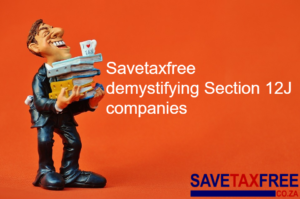Home-work time
By Leya Mall | 30 January 2019

Welcome back readers, to the Tax-Saving South African, where I walk with you in your personal journey through a range of financial themes
When I was younger – before I started working – the idea of buying a house seemed so much simpler. Once I started looking into it, I was stunned at how many issues you have to take into consideration and how complex they make everything. I’ve tried to simplify things in this article while covering all the bases.
Young working people simply won’t be able to afford a mansion so let’s take this reality check together and assess what we can afford for now. And don’t feel guilty about this purchase: unlike a car which loses value the moment you drive it out of the showroom, a property is a valuable asset and a long-term investment. It appreciates in value over time.
Let’s go shopping for that dream place. In this week’s case study, we follow Connor and Megan, aged 26 and 25. They plan to buy a home in Ferndale, Johannesburg, an area they selected after assessing the market and realising it was one of the few affordable areas – and not far from their workplaces in Sandton and Rosebank. These are the steps they should follow.
Step 1: On a bank’s website, they calculate the home financing they can afford (this is very important). The bank calculator looks at collective monthly income (after tax) which in their case is R28,000. Their collective monthly expenses come to R10,000. They’ve assumed an interest rate of 10% and want the loan duration to be 20 years. If Connor and Megan are happy with the estimates, they can apply for a pre-approved bond and put in an offer for their chosen apartment. The pre-approved bond gives you a degree of power later on when negotiating price because the seller will know that there won’t be any hassles with payment. With that, it’s easier to negotiate a good price.
The calculator estimates that they can take a loan of up to a R870,447 and the collective estimated monthly repayment comes to R8,400 (includes interest). This is assuming they don’t have a 10% deposit, which some banks don’t require, depending on your credit history.
Step 2: Now for the exciting part … the house hunt. Well – in this case it’s more likely to be a flat or townhouse rather than a house given the @$$%^&&*&%# astronomical price of an average Johannesburg house. [Translation: they’re expensive.]
Now we use an online house finder (we sourced our pricing from Private Property). Connor and Megan have their eye on a two-bedroom townhouse in Ferndale, advertised for R900,000.00. Having visited it on a show day, they absolutely love it (although they think the kitchen needs new tiling and the garden’s a bit small).
Step 3: A very important step is to determine the holistic cost and for an apartment or townhouse in a complex, there is a monthly levy as well as rates and taxes. According to Private Property, the rates come to R500 and the levy comes to R1,200. The levy usually includes costs of security, maintenance and gardening of the communal area.
Before applying for a home loan, familiarise yourself with the jargon so that you don’t feel dumbstruck when the banker in the fancy suit tries to explain the process.
A bond: A loan extended to the buyer of a property by a bank or financial service provider. The interest rate you’ll pay will vary depending on your circumstances.
Access bond: This allows you to withdraw any extra funds you may have managed to pay into you bond. Offer to purchase: This is a formal offer made by a buyer for a property. This is usually concluded via an estate agent.
Agreement of sale: A written contract between the seller and buyer that records the terms and conditions of the sale of a property, often referred to as a deed of sale.
Conveyancer: A lawyer qualified to prepare documents for the transfer of a property and the registration of mortgage loans.
Deeds office: The government department where the rights and interests in a property are registered.
Source: SA Home Loans
So, Connor and Megan will have to pay R10,100 a month collectively. Then they have to add insurance, the amount which varies depending on the value of the property, security and so on.
Step 4: The negotiations. Don’t simply offer the price at which the property is advertised. Megan and Connor’s initial bid of R850,000.00 was rejected, so they put a second bid in for R870,00.00. Because they could show the pre-approved bond, this offer was quickly accepted. So they’re paying R30,000.00 less than the advertised price.
Step 5: Once the offer is accepted, the transfer begins – and there’s a bunch of other stuff you have to pay for. Brace yourself.
The buyer’s conveyancer prepares the documents for the transfer of the property as well as for the bond registration at the deed’s office.
Now you may need to sit down for this: there’s still a transfer fee that goes to the government, determined as a percentage of the sale price. In this case the transfer fee comes to a whopping R53,331 (the online calculator works it out for you). This amount can be paid by the bank and added to your bond amount.
One more thing (I did warn you at the beginning about how complex this all was) – occupational rent. The transfer often takes months to go through but Megan and Connor want to move in at the beginning of next month. During the negotiations the seller and buyer agree on a date for the buyer to move in, which is usually before the transfer is finalised – so the seller is still the owner. The buyers agree to pay occupational rent. This runs from the time they move in until the transfer is completed. From then they will start paying off their bond directly.
Step 6: Now Megan and Connor have successfully purchased a home, which they must pay for over 20 years. If they want to decrease the repayment period, they can pay in extra amounts. Paying extra is something worth pursuing: it can dramatically decrease the overall amount you will eventually pay, as reflected in the tables below.
Paying extra will also enable that access bond facility where you can draw out any excess funds you’ve paid in. But remember, you will have to pay that back eventually.
And that’s it! That’s how you can sign up for a 20-year debt trap … just kidding! Alternatively, you can always rent until you can afford your home by taking a look at Warren Ingram’s article on savings tips for big-ticket items.
Continue following this series to become a wiser tax-saving South African!






